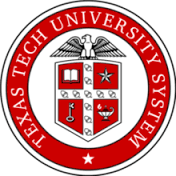Texas Tech University’s Clarissa Strieder-Barboza received a $300,000 grant from the United States Department of Agriculture’s National Institute of Food and Agriculture Cooperative Research Education & Extension Service for the purpose of understanding the mechanisms leading to the development of ketosis dairy cows.
Strieder-Barboza, an assistant professor with a dual appointment in the Davis College of Agricultural Sciences & Natural Resources Department of Veterinary Sciences and the Texas Tech School of Veterinary Medicine in Amarillo, aims to improve production in dairy cows by reducing the impact of ketosis, the natural metabolic process of burning fat cells to produce energy when carbohydrates are not available.
“Our ultimate goal is to reduce economic losses associated with decreased milk production, reproductive performance and welfare in cows that develop ketosis after calving,” Strieder-Barboza said.
By obtaining fat tissue from early lactation cows, both with and without ketosis present, and using novel genomics techniques such as single-cell RNA sequencing analysis, Strieder-Barboza believes her research can form the basis for developing new methods of preventing metabolic diseases.
“We expect to reveal how ketosis affects specific cell subtypes in adipose tissues using highly innovative techniques,” she said. “This work will be the basis for developing new nutritional and therapeutic interventions to prevent metabolic disease.”
According to Strieder-Barboza, ketosis may affect up to 80% of early lactation dairy cows. Understanding how ketosis affects fat tissue function, including its ability to break down during energy shortage, is crucial in developing preventative measures to help offset economic losses.
“The first step toward developing tissue- and cell-specific therapies against ketosis is identifying which cell subtypes are involved in fat tissue dysfunction,” she explained. “It’s similar to what is being developed in human medicine to prevent and treat obesity and type 2 diabetes.”




